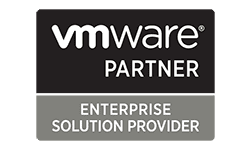Cloud Computing: A Guide for Understanding Key Concepts
How Cloud Computing Transforms SMBs: A Comprehensive Guide to Operational Efficiency and Security
Kelsey Young, Copywriter and Media Specialist
6 Min Read

Cloud computing has fundamentally changed how businesses operate. You’ve likely heard of cloud computing but may still be grappling with what it means for your company. With so much technical jargon and countless service options, it’s easy to feel overwhelmed.
At GDC IT Solutions, we work with companies just like yours to help demystify cloud computing. Our goal is to help you make informed decisions that lead to greater operational efficiency, security, and cost savings. Let’s break down the key concepts of cloud computing.
What Is Cloud Computing?
At its core, cloud computing refers to the delivery of computing services like storage, processing power, and software over the internet, instead of through local servers or personal devices. Picture this: instead of purchasing expensive hardware and software for your business, you essentially rent them on demand from cloud service providers such as Amazon Web Services (AWS), Microsoft Azure, or Google Cloud.
This means you only pay for what you use, can scale your services up or down based on your needs, and access critical business functions from anywhere in the world. It’s all about flexibility, efficiency, and cost-effectiveness.
The Building Blocks of Cloud: IaaS, PaaS, and SaaS
Cloud computing can be confusing because there’s no one-size-fits-all model. Instead, it offers three distinct service models that provide different levels of control and management for your business:
Infrastructure as a Service (IaaS): Think of IaaS as renting the hardware you’d typically find in a data center. You get virtualized computing resources—like storage and servers—over the internet. This is perfect if you want control over the infrastructure but don’t want the headache of managing physical servers.
Platform as a Service (PaaS): PaaS provides a platform that allows your development team to build, run, and manage applications without worrying about the underlying infrastructure. It’s ideal for companies that are building custom software but don’t want to deal with infrastructure logistics.
Software as a Service (SaaS): This is probably the most familiar to SMBs. SaaS delivers fully functional software applications over the internet, like email (e.g., Gmail), customer relationship management (CRM) tools (e.g., Salesforce), or collaboration platforms (e.g., Microsoft Teams). You simply log in and start working—no installations, no maintenance.
Choosing the Right Cloud Model: Public, Private, Hybrid, and Multi-Cloud
Not all clouds are created equal. Depending on your business needs, you’ll need to choose between different cloud deployment models:
Public Cloud: This is the most common type of cloud. Public clouds, like AWS or Azure, offer services over the internet to multiple users. It’s a cost-effective option for SMBs because you don’t have to manage the infrastructure, but it means your data and applications share space with other customers’ resources.
Private Cloud: A private cloud gives you dedicated cloud infrastructure for your business. This offers more control and security but can be more expensive to implement and manage.
Hybrid Cloud: Hybrid clouds combine the best of both public and private clouds, allowing you to store sensitive data in a private cloud while using the public cloud for less critical operations.
Multi-Cloud: Some companies spread their workloads across multiple cloud providers to avoid vendor lock-in, improve redundancy, and enhance performance. For example, you might use AWS for data storage but rely on Azure for application hosting.
The Role of Virtualization
A critical part of cloud computing is virtualization, which allows multiple virtual machines to run on a single physical machine. Why does this matter to your business? Virtualization optimizes hardware use, allowing more flexibility and efficiency. Instead of needing multiple servers for different applications, you can host them all on a single server. This cuts down costs and simplifies your IT management.
Security in the Cloud: A Shared Responsibility
Security is often a top concern for SMBs considering a move to the cloud, and rightly so. The good news? Cloud providers take security seriously, investing in state-of-the-art measures to protect your data. However, it’s important to understand that security in the cloud is a shared responsibility between the provider and your business:
Cloud Provider’s Role: They are responsible for securing the infrastructure, including physical hardware, networks, and data centers.
Your Role: As the customer, you are responsible for securing your data, managing access controls, and ensuring best practices, like encryption, are in place.
GDC IT Solutions works closely with businesses to ensure their cloud environments are secure, compliant, and meet industry standards. We help you implement proper access controls, encryption, and monitoring systems to protect your data.
Data Storage and Backup: Keep Your Data Safe and Accessible
Whether you’re storing customer data, managing inventory, or running software, your business generates tons of data every day. The cloud offers several storage solutions, from object storage (like AWS S3) to relational databases (like AWS RDS). These services ensure your data is accessible, secure, and regularly backed up.
Additionally, cloud providers offer robust disaster recovery solutions, ensuring that even if there’s a failure in one region, your data remains safe and accessible from another.
High Availability and Disaster Recovery
Downtime is costly, especially for SMBs that rely heavily on online services. Cloud providers offer high availability by distributing workloads across multiple data centers, ensuring that your services stay online even if one server or region fails.
Similarly, disaster recovery solutions ensure that in the event of a catastrophic failure—like a cyberattack, natural disaster, or hardware issue—your business can recover quickly. Cloud-based backup and replication strategies provide peace of mind, knowing your critical data is always protected.
Empower Your Growth with Cloud Solutions Tailored for SMBs—Partner with GDC IT Solutions Today
Cloud computing isn’t just a trend; it’s a game changer for SMBs looking to grow while keeping costs manageable. Whether you’re just starting your cloud journey or looking to optimize your existing setup, GDC IT Solutions is here to help. We’ll work with you to understand your business needs and ensure that your cloud infrastructure is secure, scalable, and perfectly aligned with your goals.
Ready to harness the power of the cloud? Contact GDC today to learn how we can help you make the move with confidence.




